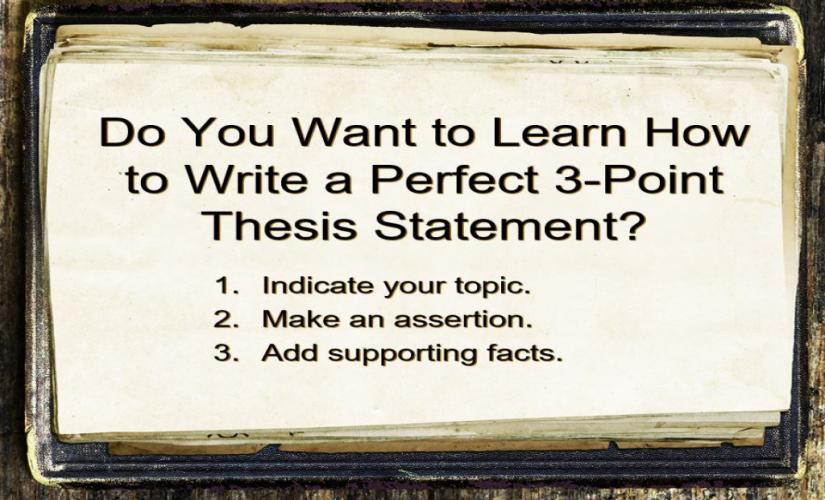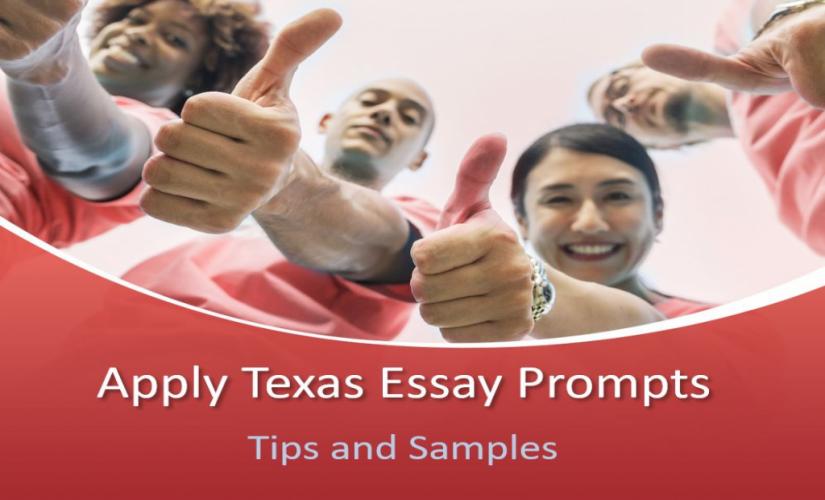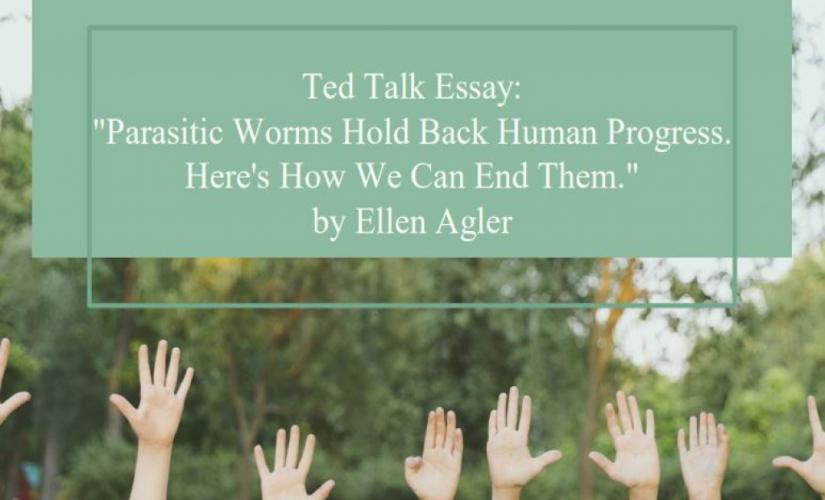A 3-point thesis statement is a coherent sentence that integrates the three essential components of a standard thesis statement, which include a topic, an assertion, and reasons justifying a specific claim. Basically, any topic should narrowly define its subject. In this case, defending the main claim requires writers to highlight a number of reasons. It is possible through the application of conjunctions. While formulating a working 3-pronged thesis statement, it is crucial to ensure that this sentence is question-focused, debatable, precise, and concise. Additionally, reviewing biography essay examples might help writers better structure their thoughts. Using non-technical language, concrete, and transpicuous words can help to improve its clarity. To make it stand out, a perfect 3-point thesis statement should be an original, specific, justifiable, and socially relevant idea derived from facts.
What Is a 3-Point Thesis Statement and Its Purpose
According to its definition, a 3-point thesis statement is a specific type of thesis statement that outlines the main argument or claim of an essay and provides three distinct parts to support it. The purpose of a 3-point thesis statement, which cannot be a question, is to provide a clear and organized roadmap for readers so that they can be familiar with the entire content, and it is usually located at the end of the introduction paragraph as a single sentence (or two), according to academic writing rules (Graff & Birkenstein, 2016). Besides, this sentence acts as a guide to readers on what essays entail, including the arrangement of ideas adopted. In this case, a strong thesis statement should precisely define an essay topic by considering a definition of the main claim, having an applicable case, and covering motivations to back up the case (Jackson, 2014). Therefore, in order to answer what is a 3-point thesis statement, this sentence consolidates the three key segments, which include a subject, an assertion, and pertinent reasons to support the main claim.

Formulating a 3-Part Thesis Statement
Topic Selection
Generally, the question prompt in schools, colleges, and universities states a specific essay topic, and, at times, the writer is required to present a single sentence. It is prudent for students to brainstorm on a few topics before selecting a particular theme (Graff & Birkenstein, 2016). Basically, each argument made in an academic paper requires feasible proof. Rather than writing “democracy,” it would be wise to write “the American democracy.” Thus, the topic selected ought to be a narrow description of an essay subject.
Making an Assertion
The process of developing a strong claim begins by identifying the relationship between your idea and available information. For instance, integrating ideas, the subject, and known facts will help in formulating a viable argument (Jackson, 2014). Rather than developing a personal claim, writers should make an argument that is socially relevant and easily contestable. In this case, each piece of evidence stated will aid in developing a topic sentence in the body of an academic essay. Moreover, the basis highlighted in a working paper and the order of ideas adopted in segments determine the number and arrangement of the body paragraphs.
Support Inclusion
The last part of a 3-point thesis statement involves providing reasons to back up your opinion. In particular, the application of conjunctions, such as “because,” “as,” “due,” “although,” and “since,” helps in integrating the main claim and justification (Graff & Birkenstein, 2016). Then, highlighting shreds of evidence can be helpful, especially in determining the extent to which writers will expound their claims. In this case, this attitude determines the length of a final paper. However, the process of developing a 3-part thesis statement ought to remain adaptable until authors complete writing papers (Jackson, 2014). Basically, writers may discover vital information, such as new evidence that is relevant to a good essay topic. Hence, after completing a paper, it is necessary to go through an essay and identify the information that needs to be included or eliminated from a 3-point thesis statement.
Receive personalized assistance from our writers, ensuring your paper is both original and tailored to your needs.
What Questions to Ask
Usually, the question prompt guides writers during the formulation of a good claim by presenting the topic. For instance, a relevant 3-point thesis statement must be present at the beginning of any paper, usually in the first paragraph, as the last sentence (Sharp, 2011). In this case, formulating a debatable and question-focused argument, followed by supporting statements or phrases, is the first step toward having a good tentative thesis, which should be precise and concise. In turn, specificity can be achieved by revising an argument several times. In turn, students can select the most specific idea from a few formulated arguments to answer the same question (Sharp, 2011). When developing a 3-point thesis statement, it is important to ask corresponding questions that help them to clarify and refine their main arguments and ensure their claims are strong and effective. Hence, before presenting their essays, writers should answer the following questions:
- What is my main argument or claim? – Clearly define the central idea you want to convey in your essay.
- Does my thesis statement have the three key elements? – Identify at least three supporting points that will help you make your case.
- Is it question-focused? – Make sure your claim directly responds to a particular essay prompt or research question.
- Is my thesis statement arguable? – Check that your thesis presents a valid claim that others might dispute, providing room for debate.
- Is it precise and concise? – Ensure your sentence is straightforward and not too wordy.
- Does my thesis statement provide a roadmap for my essay? – Your statement should outline the main points that will be discussed in the body paragraphs.
- Is it specific enough? – Avoid vague language and be as precise as possible in stating your argument and supporting points.
- Does my statement take a clear position on the topic? – Make sure your sentence clearly states your stance and does not present a neutral or ambiguous position.
- Can I support my thesis statement with evidence? – Consider whether you have access to enough reliable information to back up your claims.
- Does it reflect the scope of my essay? – Ensure your claim is neither too broad nor too narrow for the length and depth of your essay.
Starting a 3-Point Thesis Statement
A vague thesis statement is incomprehensible to readers rendering an essay unclear. Being part of a final paper, writers must follow all the instructions regarding academic writing (Miller & Pessoa, 2016). In this case, writing a strong 3-point thesis statement requires writers to adopt non-technical language and eliminate vague and abstract words. The only secret to ensuring the clarity of a thesis is by revising it as many times as possible. Accordingly, writers should not assume that readers understand technical language unless the question prompt instructs otherwise (Zhang et al., 2022). In turn, some examples of 3-point thesis statement starters can help students provide a solid foundation for their essays. They look like:
- Research shows that [Main Argument] because [Reason 1], [Reason 2], and [Reason 3].
Example: “Research shows that early childhood education is crucial because it enhances cognitive development, fosters social skills, and prepares children for academic success.”
- To improve [Situation], [Main Argument] must address [Reason 1], [Reason 2], and [Reason 3].
Example: “To improve public transportation, cities must invest in infrastructure, increase service frequency, and ensure affordability.”
- The implementation of [Main Argument] can address [Reason 1], [Reason 2], and [Reason 3].
Example: “The implementation of renewable energy policies can solve the problem of climate change, reduce air pollution, and create green jobs.”
- [Main Argument] is necessary to tackle [Issue] because [Reason 1], [Reason 2], and [Reason 3].
Example: “Stricter data privacy laws are necessary to tackle cybersecurity threats because they protect personal information, prevent data breaches, and build public trust.”
- Studies indicate that [Main Argument] is due to [Reason 1], [Reason 2], and [Reason 3].
Example: “Studies indicate that a plant-based diet is beneficial due to its positive impact on health, environmental sustainability, and animal welfare.”
- [Main Argument] is supported by [Reason 1], [Reason 2], and [Reason 3].
Example: “The legalization of marijuana is supported by its medical benefits, potential for reducing criminal justice costs, and positive economic impact.”
- To achieve [Objective], [Main Argument] should include [Reason 1], [Reason 2], and [Reason 3].
Example: “To achieve energy independence, the government should invest more funds in renewable energy sources, increase energy efficiency, and develop smart grid technologies.”
- [Main Argument] is vital for [Reason 1], [Reason 2], and [Reason 3].
Example: “Addressing climate change is vital for preserving biodiversity, ensuring public health, and maintaining economic stability.”
- Considering [Reason 1], [Reason 2], and [Reason 3], [Main Argument] is essential.
Example: “Considering the rise in mental health issues, the importance of mental health education in schools is essential.”
- Effective [Main Argument] requires [Reason 1], [Reason 2], and [Reason 3].
Example: “Effective climate policy requires international cooperation, investment in green technology, and stringent regulatory measures.”
Examples of 3-Pronged Thesis Statements
Sample Thesis: People cannot achieve the American Dream due to the continual racial discrimination, corrupt justice system, and ineffective education policies across many states.
Step 1 – Topic: “The American Dream.”
Comment: It is a socially relevant topic.
Step 2 – Assertion: “People cannot achieve.”
Comment: The writer’s position is that the American Dream is unrealizable, a specific claim that will act as an essay’s basis.
Step 3 – Support With Three Points:
- Continual racial discrimination.
- Corrupt justice system.
- Ineffective education policies across many states.
Comment: There are three reasons justifying the writer’s main claim.
This is a perfect example of a thesis statement incorporating the three key elements. Basically, every American citizen yearns for an ideal America where equality of opportunity is available for all people. Hence, the “American dream” is a feasible topic. While some individuals may oppose this claim by highlighting the reasons why it is possible to have a perfect America, this essay will focus on the impossibility by having three body paragraphs based on the three reasons. In turn, other examples of a strong 3-point thesis statement are:
- To combat environmental pollution, reducing plastic use should focus on promoting reusable materials, implementing stricter regulations, and increasing public awareness.
- Online learning offers many advantages for students, including flexibility, reduced educational costs, and better access to updated courses and resources.
- Regular exercise classes positively impact children’s mental health by reducing anxiety, improving mood, and enhancing cognitive function.
- Effective public health policies should include accessible healthcare services, comprehensive vaccination programs, and robust health education.
- Workplace diversity enhances creativity, improves employee satisfaction, and increases company performance.
- Addressing the issue of childhood obesity involves promoting physical activity in schools, regulating junk food advertising to children, and encouraging healthy eating habits at home.
- Teaching financial literacy in schools is critical for preparing students’ financial independence, helping them to make informed decisions, and reducing debt likelihood.
- Integrating arts and culture subjects into education fosters creativity, improves academic performance, and enhances students’ emotional and social well-being.
- The strict regulation of social media platforms is crucial to protect user privacy, prevent the spread of misinformation, and reduce the cases of online harassment.
- E-books are advantageous over printed books due to their portability, lower cost, and environmental benefits.
Making Your 3-Point Thesis Statement Outstanding
A well-formulated 3-point thesis statement shows the writer’s ability to comprehend and analyze the topic successfully. Rather than simply stating a general fact and providing common reasons, writers ought to show their position by coming up with an informed argument justifiable upon reviewing the available information (Stadler & Conyers, 2020). In this case, if you want to know how do you write a 3-point thesis statement, the clarity of a central claim is one way of making it non-biased. By taking a specific approach, writers eliminate the need to announce the subject, which needs to weaken it. Secondly, writers should make a reasonable premise that neither simplifies nor overcomplicates the argument (Stadler & Conyers, 2020). Furthermore, it is advisable to make ideas rather than adopt formula statements or general ideas. Therefore, a good 3-part thesis statement is an original, specific, justifiable, and socially relevant idea derived from facts. Here are some examples separated by academic levels to consider:
High School
- Encouraging reading in high school students enhances vocabulary, improves critical-thinking skills, and fosters a lifelong love of learning.
- Implementing school uniforms in high schools promotes equality, reduces distractions, and enhances school safety.”
- Extracurricular activities help high school students to develop time management skills, build social connections, and improve academic performance.
- Effective bullying prevention programs in high schools should include education on empathy, strict enforcement of anti-bullying policies, and support systems for victims.
- High schools should incorporate environmental awareness into their curriculum to educate students about climate change, promote sustainable practices, and encourage community involvement.
College
- Study abroad programs benefit college students by exposing them to new cultures, enhancing their language skills, and improving their academic perspectives.
- Developing time management skills in college students leads to improved academic performance, reduced stress levels, and better preparation for future careers.
- College education enhances learning experiences, provides access to vast resources, and prepares students for their future lives.
- Providing comprehensive mental health services on college campuses can reduce student stress, improve academic outcomes, and promote overall well-being.
- College students need to participate in volunteer work to foster community engagement, enhance personal growth, and improve employability.
University
- University research opportunities allow students to develop critical-thinking skills, gain professional experiences, and contribute to their field of study.
- Promoting diversity and inclusion on university campuses enriches the learning environment, broadens perspectives, and fosters social harmony.
- Internships during university studies provide practical experience, enhance job prospects, and help students to apply theoretical knowledge.
- Financial literacy courses allow university students to prepare themselves to be independent individuals, manage their debts, and promote responsible spending habits.
- University sustainability initiatives can reduce campus carbon footprints, educate students on environmental issues, and encourage eco-friendly practices.
Master’s
- Master’s programs should focus on leadership development to prepare students for managerial roles, foster innovation, and enhance organizational effectiveness.
- Master’s courses enhance advanced research skills by offering specialized coursework, providing access to research facilities, and encouraging academic publishing.
- Networking opportunities help master’s students to build professional relationships, gain professional insights, and increase career opportunities.
- Promoting interdisciplinary studies in master’s programs broadens knowledge, fosters innovative solutions, and enhances students’ adaptability in various fields.
- Master’s courses should emphasize professional development to improve job readiness, enhance communication skills, and foster lifelong learning.
Ph.D.
- Ph.D. programs should aim to contribute original research by encouraging independent studies, providing mentorship, and facilitating academic publishing.
- Incorporating teaching experience prepares Ph.D. students for academic careers, improves communication skills, and enhances subject mastery.
- Teaching research ethics in Ph.D. courses ensures the integrity of scientific work, promotes responsible conduct, and protects research subjects.
- Effective dissertation writing requires developing a clear research question, conducting thorough literature reviews, and presenting findings coherently.
- Ph.D. students benefit from collaboration and networking opportunities by gaining diverse perspectives, accessing resources, and advancing their careers.
Summing Up
In conclusion, a 3-point thesis statement is one of the fundamental components in academic writing, ensuring clarity and direction for readers. By incorporating a precise topic, a clear assertion, and three supporting reasons, writers can effectively communicate their arguments. This approach not only aids in organizing a valid essay’s structure but also enhances the reader’s understanding. In turn, crafting a thesis statement that is question-focused, debatable, and concise can significantly improve the overall quality of any essay. Through careful revision and consideration of these elements, writers can create compelling and robust claims that form the backbone of successful essays.
References
Graff, G., & Birkenstein, C. (2016). They say: The moves that matter in academic writing. W.W. Norton.
Jackson, J. (2014). How to teach students to critically think about text: 15 easy to follow techniques for the K-12 teacher. Jackson Consulting, Inc.
Miller, R. T., & Pessoa, S. (2016). Where’s your thesis statement and what happened to your topic sentences? Identifying organizational challenges in undergraduate student argumentative writing. TESOL Journal, 7(4), 847–873. https://doi.org/10.1002/tesj.248
Sharp, S. (2011). Mastering the thesis statement. Untreed Reads.
Stadler, D., & Conyers, D. G. (2020). Advancing college students’ thesis writing ability: A case study of an online library instruction course. Scholarship of Teaching and Learning, Innovative Pedagogy, 2(4), 39–53. https://doi.org/https://digitalcommons.humboldt.edu/sotl_ip/vol2/iss1/4
Zhang, H., Shulgina, G., Fanguy, M., & Costley, J. (2022). Online peer editing: Effects of comments and edits on academic writing skills. Heliyon, 8(7), 1–7. https://doi.org/10.1016/j.heliyon.2022.e09822


